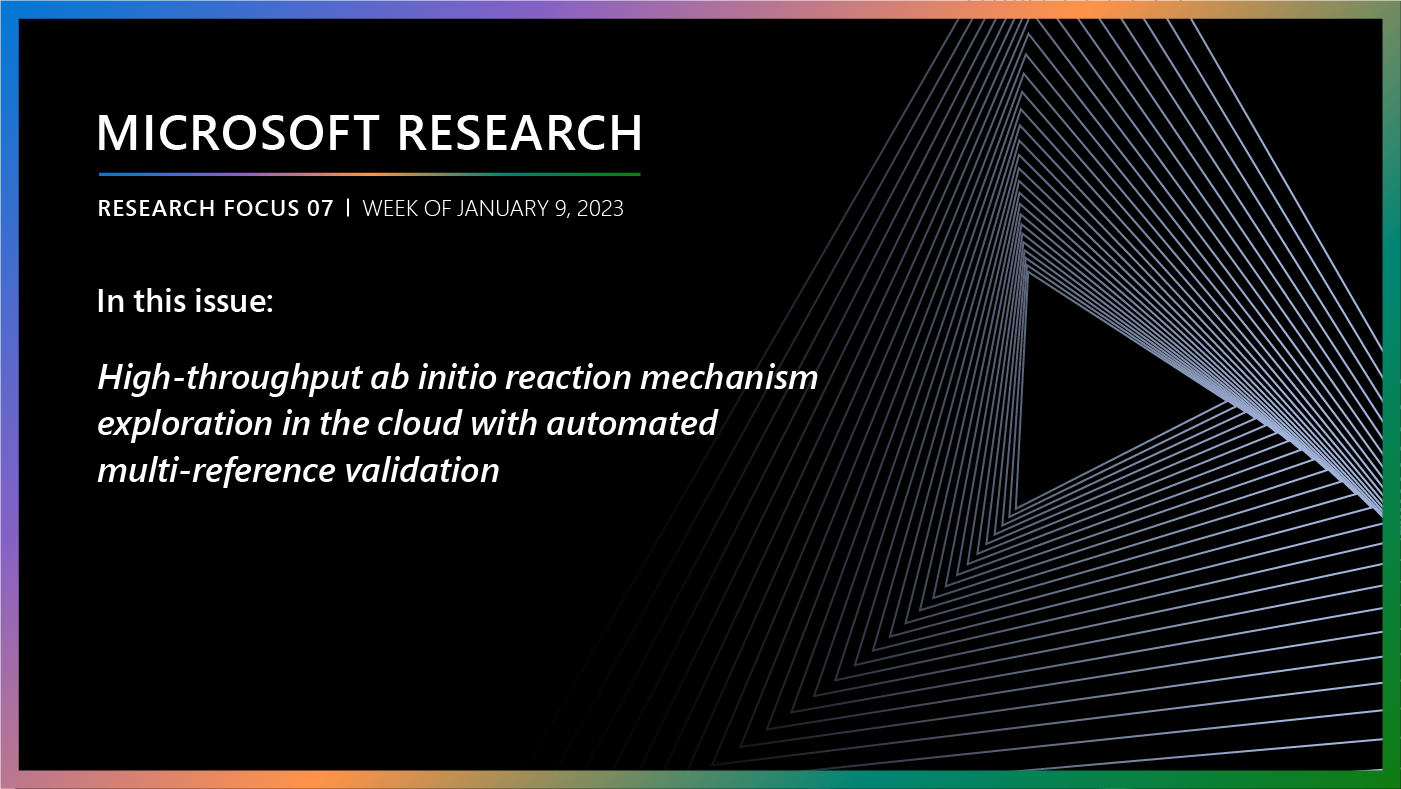
Welcome to Research Focus, a series of blog posts that highlights notable publications, events, code/datasets, new hires and other milestones from across the research community at Microsoft.
AWARD
Microsoft’s danah boyd awarded MIT’s Morison Prize
danah boyd (opens in new tab), a partner researcher at Microsoft Research, has been awarded MIT’s Morison Prize in Science, Technology, and Society (opens in new tab), for outstanding work combining humanistic values with effectiveness in the world of practical affairs, particular in science and technology.
Dr. boyd, who is also a Distinguished Visiting Professor at Georgetown University, is currently conducting a multi-year ethnographic study of the U.S. census to understand how data are made legitimate. Her previous studies have focused on media manipulation, algorithmic bias, privacy practices, social media, and teen culture.
To learn more, see the Microsoft Research Summit presentation Statistical Imaginaries: An Ode to Responsible Data Science (opens in new tab) or the publications Differential Perspectives: Epistemic Disconnects Surrounding the U.S. Census Bureau’s Use of Differential Privacy (opens in new tab).
AWARD
Microsoft’s Nicole Immorlica receives 2023 SIGecom Test of Time Award
Nicole Immorlica (opens in new tab), a Senior Principal Researcher with Microsoft Research New England, has been awarded the 2023 SIGecom Test of Time Award (opens in new tab) for her work on a 2005 paper on matching markets. The award from the Association of Computing Machinery (ACM) recognizes “an influential paper or series of papers published between ten and twenty-five years ago that has significantly impacted research or applications exemplifying the interplay of economics and computation.”
In the award-winning paper: Marriage, honesty, and stability, Immorlica and a co-author explored centralized two-sided markets, such as the medical residency market, matching participants by running a stable marriage algorithm. While no matching mechanism based on a stable marriage algorithm can guarantee ‘truthfulness’ as a dominant strategy, the paper showed that in certain probabilistic settings, truthfulness is the best strategy for the participants.
Spotlight: Microsoft research newsletter
AWARD
Microsoft’s Lorin Crawford named 2023 COPSS Emerging Leader
Lorin Crawford (opens in new tab), a principal researcher at Microsoft Research New England, has been named a 2023 COPSS Emerging Leader (opens in new tab) by the Committee of Presidents of Statistical Societies (opens in new tab). The award announcement cited Crawford’s path-breaking research combining theory and methods of mathematics, statistics and computing to generate new knowledge and insight about the genetic basis of disease, and exceptional mentoring of students from multiple scientific disciplines.
The award recognizes the important role of early-career statistical scientists in shaping the future of their discipline. The selection criteria are designed to highlight contributions in areas not traditionally recognized by other early-career awards in the statistical sciences.
Crawford, who is also a faculty member at Brown University’s School of Public Health, focuses on developing novel and efficient algorithms that address complex problems in quantitative genetics, cancer pharmacology, molecular genomics, and geometric morphometrics.
AWARD
Microsoft researchers receive Test of Time award for personalized news recommendation work
A paper co-authored by two Microsoft researchers has received a 2023 Seoul Test of Time Award from the International World Wide Web Conference Committee (IW3C2). The 2020 paper: A Contextual-Bandit Approach to Personalized News Article Recommendation, was written by John Langford and Robert Schapire, along with two industry colleagues. The authors proposed a new approach for personalized recommendation using contextual bandit algorithms. According to the IW3C2, the paper now has more than 2,730 citations and has become foundational research in the area of recommendation systems.
The award announcement also states: “The paper addressed fundamental challenges in real-world recommendation systems via computationally efficient algorithms grounded in learning theory. It also showed that recommendation algorithms can be reliably evaluated offline, enabling algorithm selection without operational impact, and that contextual bandits can yield significant gains in user engagement.”
NEW RESEARCH
A Frequency Domain Approach to Predict Power System Transients
The dynamics of power grids are governed by a large number of nonlinear differential and algebraic equations (DAEs). To safely run the system, operators need to check that the states described by these DAEs stay within prescribed limits after various potential faults. However, current numerical solvers of DAEs are often too slow for real-time system operations. In addition, detailed system parameters are often not exactly known. Machine learning approaches have been proposed to reduce the computational efforts, but existing methods generally suffer from overfitting and failures to predict unstable behaviors.
In a new paper: A Frequency Domain Approach to Predict Power System Transients, Microsoft researchers propose a novel framework to predict power system transients by learning in the frequency domain. The intuition is that although the system behavior is complex in the time domain, relatively few dominant modes exist in the frequency domain. Therefore, the researchers learn to predict by constructing neural networks with Fourier transform and filtering layers. System topology and fault information are encoded by taking a multi-dimensional Fourier transform, allowing researchers to leverage the fact that the trajectories are sparse both in time and spatial frequencies. This research shows that the proposed approach does not need detailed system parameters, greatly speeds up prediction computations and is highly accurate for different fault types.
NEW RESEARCH
Inference with Reference: Lossless Acceleration of Large Language Models
The growing use of large foundation models like GPT-3.5/4 for real-world applications has raised concerns about high deployment costs. While general methodologies such as quantization, pruning, compression, and distillation help reduce costs. At test time, output tokens must be decoded (sequentially) one by one, which poses significant challenges for LLMs to be deployed at scale.
In a new paper: Inference with Reference: Lossless Acceleration of Large Language Models, Microsoft researchers study accelerating LLM inference by improving the efficiency of autoregressive decoding. In multiple real-world applications, this research shows that an LLM’s output tokens often come from its context. For example, in a retrieval-augmented generation scenario for a search engine, an LLM’s context usually includes relevant documents retrieved from an external corpus as reference according to a query, and its output usually contains many text spans found in the reference (i.e., retrieved documents). Motivated by this observation, the researchers propose an LLM accelerator (LLMA) to losslessly speed inference with references. Its improved computational parallelism allows LLMA to achieve over 2x speed-up for LLMs, with identical generation results as greedy decoding, in many practical generation scenarios where significant overlap between in-context reference and outputs exists. The researchers are collaborating with the Bing search team to explore integrating this technique into snippet/caption generation, Bing chat, and other potential scenarios.
NEW RESEARCH
High-throughput ab initio reaction mechanism exploration in the cloud with automated multi-reference validation
Quantum chemical calculations on atomistic systems have evolved into a standard approach to studying molecular matter. But these calculations often involve a significant amount of manual input and expertise. Most of these calculations could be automated, alleviating the need for expertise in software and hardware accessibility.
In a new paper: High-throughput ab initio reaction mechanism exploration in the cloud with automated multi-reference validation, researchers from Microsoft present the AutoRXN workflow, an automated workflow for exploratory high-throughput electronic structure calculations of molecular systems.
This workflow i) uses density functional theory methods to deliver minimum and transition-state structures and corresponding energies and properties, (ii) launches coupled cluster calculations for optimized structures to provide more accurate energy and property estimates, and (iii) evaluates multi-reference diagnostics to back check the coupled cluster results and subjects them to automated multi-configurational calculations for potential multi-configurational cases.
All calculations take place in a cloud environment and support massive computational campaigns. Key features of all components of the AutoRXN workflow are autonomy, stability, and minimum operator interference.
The paper was recently published in the Journal of Chemistry and Physics (opens in new tab).





